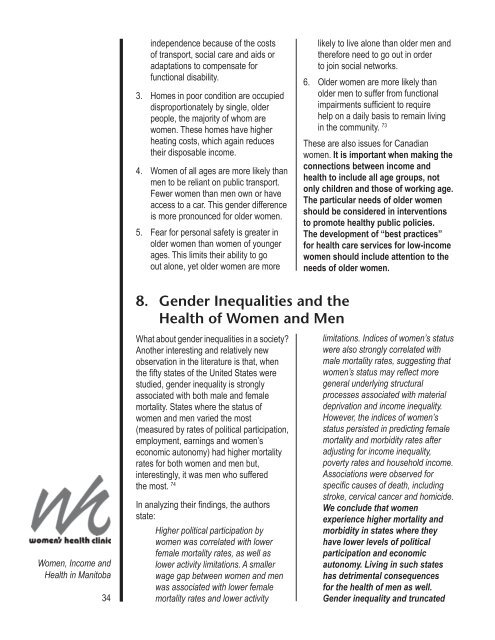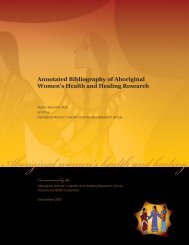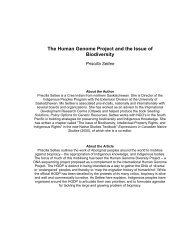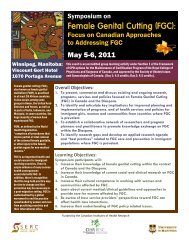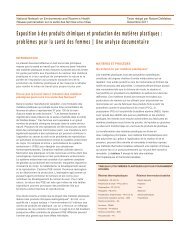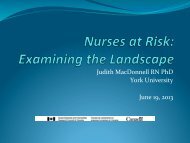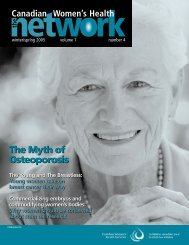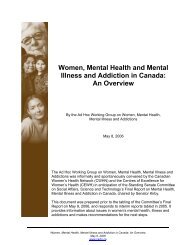here. - Canadian Women's Health Network
here. - Canadian Women's Health Network
here. - Canadian Women's Health Network
- No tags were found...
You also want an ePaper? Increase the reach of your titles
YUMPU automatically turns print PDFs into web optimized ePapers that Google loves.
independence because of the costsof transport, social care and aids oradaptations to compensate forfunctional disability.3. Homes in poor condition are occupieddisproportionately by single, olderpeople, the majority of whom arewomen. These homes have higherheating costs, which again reducestheir disposable income.4. Women of all ages are more likely thanmen to be reliant on public transport.Fewer women than men own or haveaccess to a car. This gender differenceis more pronounced for older women.5. Fear for personal safety is greater inolder women than women of youngerages. This limits their ability to goout alone, yet older women are morelikely to live alone than older men andt<strong>here</strong>fore need to go out in orderto join social networks.6. Older women are more likely thanolder men to suffer from functionalimpairments sufficient to requirehelp on a daily basis to remain livingin the community. 73These are also issues for <strong>Canadian</strong>women. It is important when making theconnections between income andhealth to include all age groups, notonly children and those of working age.The particular needs of older womenshould be considered in interventionsto promote healthy public policies.The development of “best practices”for health care services for low-incomewomen should include attention to theneeds of older women.8. Gender Inequalities and the<strong>Health</strong> of Women and MenWomen, Income and<strong>Health</strong> in Manitoba34What about gender inequalities in a society?Another interesting and relatively newobservation in the literature is that, whenthe fifty states of the United States werestudied, gender inequality is stronglyassociated with both male and femalemortality. States w<strong>here</strong> the status ofwomen and men varied the most(measured by rates of political participation,employment, earnings and women’seconomic autonomy) had higher mortalityrates for both women and men but,interestingly, it was men who sufferedthe most. 74In analyzing their findings, the authorsstate:Higher political participation bywomen was correlated with lowerfemale mortality rates, as well aslower activity limitations. A smallerwage gap between women and menwas associated with lower femalemortality rates and lower activitylimitations. Indices of women’s statuswere also strongly correlated withmale mortality rates, suggesting thatwomen’s status may reflect moregeneral underlying structuralprocesses associated with materialdeprivation and income inequality.However, the indices of women’sstatus persisted in predicting femalemortality and morbidity rates afteradjusting for income inequality,poverty rates and household income.Associations were observed forspecific causes of death, includingstroke, cervical cancer and homicide.We conclude that womenexperience higher mortality andmorbidity in states w<strong>here</strong> theyhave lower levels of politicalparticipation and economicautonomy. Living in such stateshas detrimental consequencesfor the health of men as well.Gender inequality and truncated


